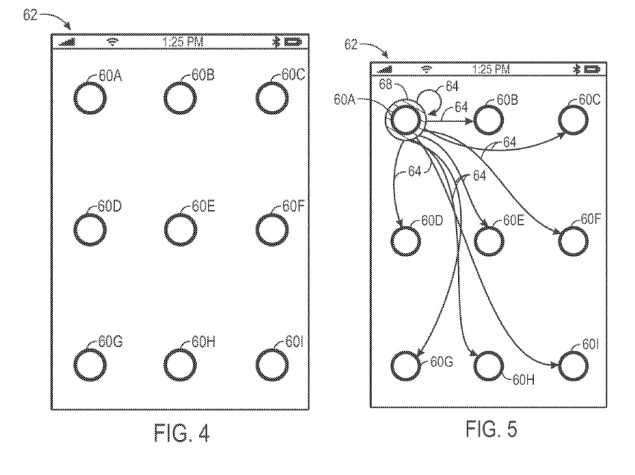Apple toyed with Android-style gesture unlocks before TouchID came along
Advertisement

While Apple has stuck by PIN code and passwords to unlock iOS devices (until TouchID fingerprint scanner came along), it seems the company was also considering gesture entry techniques - which look very similar to Android's pattern unlock.
A report in AppleInsider revealed that on Wednesday the United States Patent and Trademark Office published two Apple patent applications titled Gesture Entry Techniques. These applications outline a system for unlocking a device by drawing a pattern on-screen, which is very similar to the system which already exists on Android devices.
These patents were filed in October 2012, four years after Google had introduced patterns in Android, but Apple's system includes a few twists on Google's concept.
Advertisement
The patent notes that these patterns might be a better option for security than a PIN or password, stating:
Advertisement
Some electronic devices are configured with security measures to decrease accessibility of confidential information to unauthorized parties. However, conventional security measures such as the use of alphanumeric security codes (e.g., passwords, personal identification numbers [PINs], etc.) may not provide adequate security. In particular, screens or fields for entering a password or PIN may be visible to a bystander who may be able to view the entered security code. Furthermore, users may select a password or PIN which may be guessed relatively easily and may not provide a high degree of security for the stored confidential information.
Advertisement
What's different about Apple's approach is that it includes elements of Microsoft's "picture passwords" as well. According to the patent, you can change the size of the points which you will be swiping, and rearrange the points, so make it easier or harder to make certain visible swipes. And, adding to the complexity, there are also invisible points in the swipe which don't show up on the screen - this means that not only must you hit the visible dots in the correct order, as in an Android device, but between these you might need to pass through a hidden dot as well, the way picture passwords work.
In the patent, it is also mentioned that the speed of the swipe, pauses, and even multiple fingers can be incorporated, though that might push the complexity too high to be user friendly.
While it's unlikely that Apple will use the feature described - as TouchID provides a similar balance of convenience and security - but it's interesting to see another take on how gestures can be implemented in security.
For the latest tech news and reviews, follow Gadgets 360 on X, Facebook, WhatsApp, Threads and Google News. For the latest videos on gadgets and tech, subscribe to our YouTube channel. If you want to know everything about top influencers, follow our in-house Who'sThat360 on Instagram and YouTube.
Advertisement
